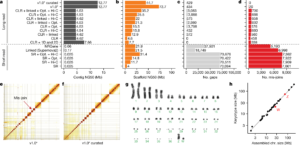Identity cards hold a lot of importance in your daily lives as it helps in securing your identity. With the availability of all the options of ID card, it is quite challenging to choose the perfect type of card for security needs and identification access of your organization. The identity cards are an essential part of every business world. It helps in simplifying the identification of a visitor and enhance the security and integrity of a company. The lanyards that use magnetic technology and encodes information are known as magnetic stripe cards.
Differences between Magnetic stripe cards and proximity cards
You can find out the use of this technology in a credit card or a hotel key card. On the other hand, proximity cards are programmed more securely. They are programmed using computer language which encodes the cards with data and security numbers. These are the types of cards that cannot be touched physically. Given below are the differences between magnetic stripe cards and proximity cards.
Security Options
In the field of the security options of the ID card, the magnetic stripe cards come up with an excellent level of security, and definitely, they are more secure than the proximity cards. To use the magnetic stripe cards, you need to swipe the card through a card reader. In case of a proximity card, you don’t need to swipe it through a card reader rather you need to wave them just in the front of a reader. Thus it can be said that a proximity card is a contactless card.
Information storage
The information that is stored inside a magnetic strip card can easily be altered or change with the interference of other magnetic. On the other side, the information that is stored inside a proximity card cannot be unaltered or changed. Have you ever gone to a hotel and felt that your room key has stopped working? This happens because you must have put that card near any other magnet like a money clip or your cell phone’s battery and as a result, all the information in the magnetic stripe card got damaged. You may be thinking why credit cards do not suffer from the same problem. This is just because the magnet used in credit cards is quite stronger than a magnet used in your room key.
Your needs
The difference between a magnetic stripe card and a proximity card depends on your needs too. If you have a card reader that needs swiping cards on it, then you will need magnetic stripe cards. This is a low-budget solution. This can be done simply with the help of an ID card software and printer. This will make you have a card which is more secure and that too without a very large investment. Now, on the other hand, do you need a card that will provide you more security in accessing fax machine, computer, equipment cabinets, and contactless access? Then the proximity card is the one that you need. You can also enjoy the right of encoding cards online by using specialized software and specialized equipment.
Sending data
In case of proximity cards, they can only send data. They are the ones who are being only encoded with the access code of a particular building for unlocking its doors. Besides being useful, they have a great disadvantage in comparison with a magnetic stripe card. Proximity cards are not at all flexible like magnetic stripe cards. Unlike the magnetic stripe cards, a proximity card needs to be operated from a very close distance. The Custom Lanyards can either be magnetic stripe cards or proximity cards.
Flexibility
The type of data that are stored in a magnetic stripe card is quite flexible. It allows the individual to save different forms of data and also to use them in a large number of applications. Being flexible is a great advantage for the magnetic stripe card. Magnetic stripe cards are even regarded as the most popular options for storing of data on a card.
Thus, it can be understood that there are quite a lot of differences between magnetic stripe cards and proximity cards. Sometimes the use of the individual who needs it helps in differentiating between magnetic stripe cards and proximity cards.




